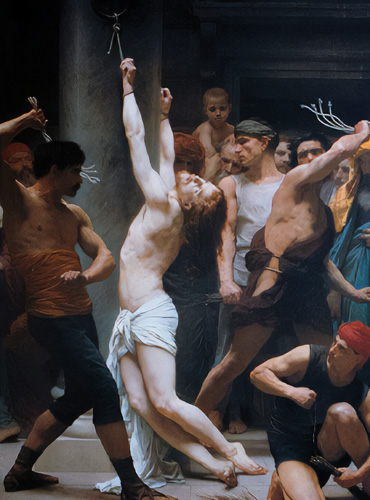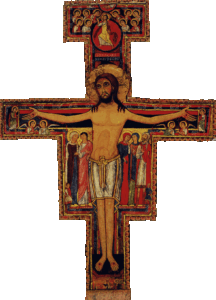Currently there are many terrible attacks against the religious life. In a document by the Spanish Conference of Bishops about theology and secularization, a paragraph was dedicated to this topic, and the bishops made it clear how some people, even religious, seek to destroy the consecrated life: “Consecrated life is a form of sequela et imitatio Christi, of following and imitation of the Person of the Lord. Thus, religious life is gravely injured when it accepts a Christology that does not correspond with the ecclesial Tradi-tion.”[1]
Some of the consequences that follow are that “it implies an ecclesiological reductionism by conceiving of religious life as a ‘critical authority’ within the Church.” This is what some thinkers maintain, teaching that the mission of religious within the Church is to criticize. “From sentire cum Ecclesia, they move to the practice of agere contra Ecclesiam when they live out the hierarchical communion dialectically, confronting the ‘official or hierarchical Church’ with the ‘Church of the people of God.’ They then invoke the ‘time of the prophets,’ and confuse their attitudes of dis-sent, which greatly hurt the ecclesial communion, with prophetic denunciations. The consequences of these approaches are disastrous for the entire Christian people and, in a particular way, for all consecrated persons; this reductionism leads some to empty the evangelical counsels, the most central element of their consecration, of their Christian content.”[2]
This is what we find, for example, with Diarmuid O’Murchu, who wrote a book called Reframing Religious Life: An Expanded vision for the Future, in which he calmly offers the best possible formula for destroying religious life.[3] I will not analyze here the entire ex-position that he makes, because it would take too long, but I will mention what concerns the religious vows.
According to our author, we should start to call the vow of chastity the “vow for relatedness,” which is, you see, exactly the opposite of what Jesus Christ taught. Everything is included in this relation: it is unbelievable. For example, he says, “What is the framework for relatedness? That of the patriarchal culture before Abraham, in which sexual pleasure was linked neither to where sexual intimacy is linked neither to monogamous matrimony (one man with one woman), which is a Medieval and Tridentine con-struct, nor with reproduction.” He continues, “Nor is sexual pleasure linked to a dualism of the sexes, man and woman.” But I ask, why not go back to the time before the patriarchs? Adam and Eve existed before the patriarchs, and it was them that God said, Be fruitful and multiply (Gn 1:28). What we are dealing with, however, is an ideology, and so Revelation doesn’t matter for our author, and nor does Christianity, for that matter; nothing matters to him, because he wants to reach the point of saying that a union be-tween homosexuals is something licit; this is what he is aiming at. Why? Perhaps it is because he walks like a crab himself.[4] What follows from all of this is that religious, in virtue of their vow “forrelatedness,” should be open to a sexual life that is not repressed by patriarchic thought and Christianity, one that can be expressed not only in a single relation but rather in a series of relations. For our author, the vow of chastity is “a vow for relatedness,” but, a relation with whom? With whomever. It is something unbelievable, and it was written by a so-called religious.
And the vow of poverty? It comes to be called “a vow for stewardship.” This is an absolute absurdity, as nothing of the evangelical counsels established by Christ remains at all. This is the problem of those who think that they are greater than Jesus Christ.
Lastly, the vow of obedience is transformed into a “vow for partnership” or the vow of “office of master coordinator.” Thus the superior, the one who is in charge, at the most coordinates and helps bring all others into agreement. This is the “office of master coordinator.” Religious life is destroyed in this way.
As a result of this, we find, for example, nuns who begin to want to show their hair, and they end up wearing jewelry, wanting to play the role of pretty little girls, definite slaves of the youth culture. Men and women religious, who are called to be “salt of the earth and light of the world” (cf. Mt 5:13-16) end up being ab-sorbed by the world. They are worldly religious! They don’t attract vocations, and they are not instruments that God can use to raise up vocations.
We must know clearly what and how they are living in order to know how to confront it.
We ask the Blessed Virgin, in a special way through the inter-cession of Saint Pio of Pietrelcina and Blessed Mother Teresa of Calcutta, for the grace to understand that in order for our witness to be true, it must always be diametrically opposed to what the world preaches.
[1] Episcopal Conference of Spain, Pastoral Instruction of the LXXXVI Plenary As-sembly of the Episcopal conference of Spain, “Teología y secularización en España. A los cuaren-ta años de la clausura del concilio Vaticano II,” Madrid, March 30, 2006, 46. Available at http://www.conferenciaepiscopal.nom.es/documentos/Conferencia/teologia.pdf – Visited February 27th, 2011.
[2] Pastoral Instruction, 47.
[3] Pastoral Instruction, 47; Cf. Doctrinal Commission of the Spanish Bishops’ Confer-ence, A Doctrinal Note on the Book “Reframing Religious Life. An Expanded Vision for the Future,” by Fr. Diarmuid O’ Murchu, M.S.C. (8.7.2002). An English translation can be viewed at http://www.ewtn.com/library/BISHOPS/docnoteomurchu.HTM
[4] camina como los cangrejos – Let the reader understand.






